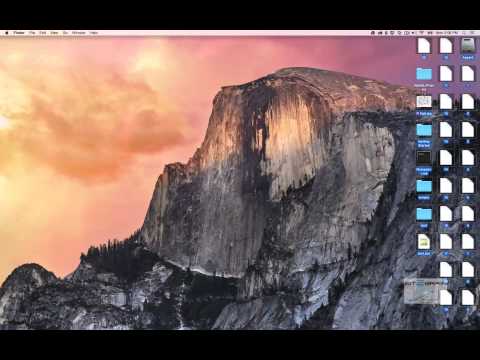
- #Xquartz for mac yosemite mac os x
- #Xquartz for mac yosemite install
- #Xquartz for mac yosemite download
The spelling checker uses MySpell dictionaries - the same ones that LibreOffice and NeoOffice use. When reading it, remember that AppleLanguages (which corresponds to the language list on the Languages & Text system preference pane) sets the LANGUAGE environment variable and AppleLocale (Formats in the Languages & Test pane) sets the LANG variable. Howto:Change the language of reports has more information on language features in Gramps. Note that you will need to run Gramps at least once before the defaults system will recognize its existence before that trying to use defaults will produce an error about there being no Gramps application. The settings are stored in ~/Library/Preferences/ĭefaults delete -app Gramps AppleLanguages (or AppleLocale or AppleCollation). This gave "Can't determine domain name for application Gramps defaults unchanged" for me if you have problems you can use
/article-new/2012/02/x11_mountain_lion_alert.jpg)
To set Gramps to operate in German with German calendar and formatting. If you want to run Gramps with different locale settings than you use for your system settings, you can use the "defaults" program from Terminal.app (Applications:Utilities:Terminal.app):ĭefaults write -app Gramps AppleLocale "de_DE" German and France doesn't work, nor does Dutch and Switzerland. Some examples: French and France, Belgium, or Canada work fine, as do German and Germany or Switzerland and Dutch and Netherlands or Belgium. It will always fall back to English if it can't figure out your Language & Region settings.

it will honor the settings in System Preferences>Language and Region provided that the combination results in a locale that exists in /usr/share/locale. If Gramps has the appropriate translation, calendar, etc. the environment variable LANG) can be accessed through Gramps.app (generally in /Applications): Right click on "Gramps.app", select "Show Package Content" from the menu, the start-up settings are found in the file Contents/MacOS/Gramps.
#Xquartz for mac yosemite install
It's useful to install LibreOffice, Calligra (or NeoOffice, a more mac-friendly version) to work on your reports after saving them from Gramps.įile structure: Gramps database and settings files can be found at the following places in the Mac file system (Gramps Version 3.2.5 and later): Clicking the Google Maps button in the Places display should bring up the map in the browser. Clicking the view button in an internet reference should bring up the URL in the default browser. Links with other programs: Double clicking an image in the media reference editor should bring up Apple Preview (or a whatever program you've set as the default to edit that kind of image) to view the image. Once installed on your computer, it opens like any other application. Once it's downloaded, you can open the file (just double click on it in Finder if your browser doesn't open it automatically) and drag the Gramps application wherever you like.
#Xquartz for mac yosemite download
There seems to be a binary object incompatibility in SQLite3 databases, even when running an Intel binary using Rosetta2.įrom the Download#Mac_OS_X page download the dmg. Make an XML backup of your databases on your Intel Mac and copy them to your Apple Silicon Mac and restore them there after installing Gramps. Slow-double-click on the new copy so that you can edit the name and delete the '.' at the beginning to unhide it. Option-drag the whole thing to Library/Application Support (the one in your home folder, not the one in your boot drive's "root" directory). (Yes, substitute your userid for "yourname".) The hidden folder will appear, highlighted and open. Type " /Users/yourname/.gramps" in the dialog box that opens up, and click on "Go". Select a Finder window and select Go>Go to Folder from the menu.


Unless you've changed the location in Preferences, the data is in a hidden folder in your home directory called ". New Version Notice: If you are upgrading from the pre-built Gramps Application version 3.2.3 or earlier (or a build from source version) and you want to keep your old database and settings, you'll need to create a Library/Application Support/gramps folder with your existing data in it. (Right click/option click and select "Make a copy" from the menu. If you've been using the Gtk-OSX build, version 3.2.4 or later, just copy Library/Application Support/gramps/grampsdb. (You do test your Time Machine backups periodically, right?) But it doesn't hurt to have a spare copy set aside before starting up a new version.
#Xquartz for mac yosemite mac os x
Gramps 5.1 requires at least Mac OS X 10.10 (Yosemite).īack up your databases: If you're using Time Machine, that's already taken care of. MacOS versions Gramps 5.0 requires Mac OS X 10.9 (Mavericks) and later.


 0 kommentar(er)
0 kommentar(er)
